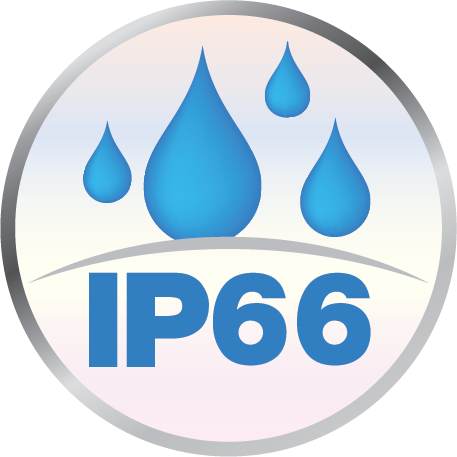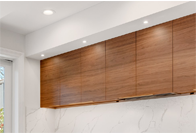Decoding the Mystery of IP Ratings: Understanding Protection in Lighting

- IP0X: No protection against solid objects.
- IP1X: Protection against solid objects larger than 50mm, such as a hand.
- IP2X: Protection against solid objects larger than 12.5mm, such as a finger.
- IP3X: Protection against solid objects larger than 2.5mm, such as a tool or a wire.
- IP4X: Protection against solid objects larger than 1mm, such as small wires or screws.
- IP5X: Protection against dust, but not completely dust-tight.
- IP6X: Complete protection against dust.
The second digit of the IP rating represents the level of protection against liquids, with a range of 0 to 8. The test requirements for this digit include measuring the protection against water from different directions and at different pressures.
- IPX0: No protection against liquids.
- IPX1: Protection against vertically dripping water.
- IPX2: Protection against water dripping at a 15-degree angle.
- IPX3: Protection against water spraying at a 60-degree angle.
- IPX4: Protection against water splashing from any direction.
- IPX5: Protection against water jets from any direction.
- IPX6: Protection against powerful water jets from any direction.
- IPX7: Protection against immersion in water up to 1 meter for 30 minutes.
- IPX8: Protection against prolonged immersion in water under specific pressure and time.
It's important to note that the test requirements for IP ratings may vary depending on the specific standard or regulations in your region. Always consult with professionals and conduct proper research to ensure compliance with local standards and regulations. In summary, IP ratings are a crucial aspect to consider when selecting lighting fixtures for any project. They provide a standard way to measure the level of protection that a light fixture has against dust and water. The first digit of the IP rating represents the level of protection against solid objects and the second digit represents the level of protection against liquids. It's important to consult with professionals and conduct proper research to understand the specific test requirements for each IP rating and to ensure compliance with local standards and regulations.
IP ratings, or ingress protection ratings, are a crucial aspect to consider when selecting lighting fixtures for any project, whether it's for a residential, commercial, or industrial setting. These ratings determine the level of protection that a light fixture has against dust and water, making it essential to understand how to choose the right IP rating for your specific application.
The IP rating system was developed by the International Electrotechnical Commission (IEC), and it's used to classify the level of protection provided by electrical equipment against the intrusion of solid objects and liquids. The rating is represented by two digits, with the first digit indicating the level of protection against solid objects and the second digit indicating the level of protection against liquids.
To determine the ideal IP rating for a project, it's essential to consider the environment in which the lighting fixtures will be used. For example, a lighting fixture that will be used in a bathroom or a kitchen will require a higher IP rating than one that will be used in a bedroom or a living room.
For example, an IP65 rating means that the fixture is protected against dust and can withstand water jets from any direction, making it suitable for outdoor use. On the other hand, an IP20 rating means that the fixture is only protected against solid objects larger than 12.5mm and is not protected against water, making it suitable for indoor use only.
But what do these numbers really mean? The first digit of the IP rating represents the level of protection against solid objects, with a range of 0 to 6. The test requirements for this digit include measuring the protection against access to hazardous parts with tools, fingers, and similar objects.
- IP0X: No protection against solid objects.
- IP1X: Protection against solid objects larger than 50mm, such as a hand.
- IP2X: Protection against solid objects larger than 12.5mm, such as a finger.
- IP3X: Protection against solid objects larger than 2.5mm, such as a tool or a wire.
- IP4X: Protection against solid objects larger than 1mm, such as small wires or screws.
- IP5X: Protection against dust, but not completely dust-tight. IP6X: Complete protection against dust.
The second digit of the IP rating represents the level of protection against liquids, with a range of 0 to 8. The test requirements for this digit include measuring the protection against water from different directions and at different pressures.
IPX0: No protection against liquids. IPX1: Protection against vertically dripping water. IPX2: Protection against water dripping at a 15-degree angle. IPX3: Protection against water spraying at a 60-degree angle. IPX4: Protection against water splashing from any direction. IPX5: Protection against water jets from any direction. IPX6: Protection against powerful water jets from any direction. IPX7: Protection against immersion in water up to 1 meter for 30 minutes. IPX8: Protection against prolonged immersion in water under specific pressure and time.
It's important to note that the test requirements for IP ratings may vary depending on the specific standard or regulations in your region. Always consult with professionals and conduct proper research to ensure compliance with local standards and regulations. However, it's not all black and white, some people believe that a higher IP rating always means better protection, but that's not always the case. It's essential to understand that the IP rating only applies to the specific test conditions defined by the IEC, and it doesn't necessarily translate to real-world use. Another misconception is that a higher IP rating means that the light fixture is waterproof, but that's not always the case. A light fixture with an IP65 rating, for example, is protected against water jets from any direction, but it's not designed to be submerged in water. It's essential to understand the specific requirements and limitations of each IP rating to ensure that you're selecting the right lighting fixtures for your project.
In conclusion, IP ratings are an essential aspect to consider when selecting lighting fixtures for any project. These ratings determine the level of protection that a light fixture has against dust and water, making it essential to understand how to choose the right IP rating for your specific application. By understanding the test requirements for the two digits of an IP rating, you can make an informed decision when selecting lighting fixtures that will meet your needs and provide the level of protection required for your project. Remember to consult with professionals and conduct proper research to ensure compliance with local standards and regulations.








